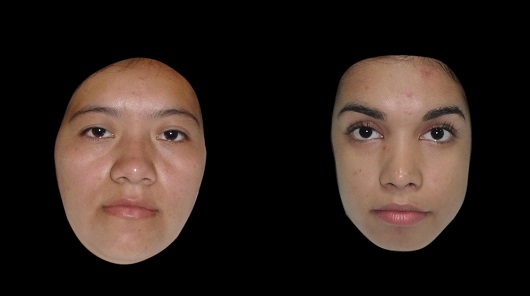Beauty and the beholder

The faces of people around us influence what we find attractive, according to the latest research by the University of St Andrews.
The study, published today (18 May 2017) by the journal Human Nature, examined how the appearance of a person’s population influences their facial preferences.
Researchers Carlota Batres, Mallini Kannan and David Perrett found that people tended to prefer mates with the same characteristics as those they were most familiar to.
The study involved asking male and female subjects in different areas which men and women they found most attractive from digitally-manipulated face pairs. The researchers also collected photographs of the subjects which were then rated online by different participants residing in another country.
The study found that the facial characteristics common to each person’s population were considered to be the most attractive.
For example, the faces of women in rural areas of Malaysia and El Salvador were rated as looking heavier than women’s faces from urban areas. Both male and female subjects in those rural areas preferred heavier-looking female faces.
Dr Carlota Batres, who led the research, said: “In a world where it is said that ‘beauty is in the eye of the beholder’, it might actually be that ‘beauty is in the faces of those we behold’, since we grow to like those around us.”
Further research will be needed to examine just how far this effect can extend, such as whether binge watching a specific show could lead us to prefer people who look like those actors, or whether high exposure to politicians’ faces could also influence our preferences.
Professor David Perrett, who runs the Perception Lab at St Andrews, added: “Future research that examines beauty ideals between populations should also examine the facial characteristics that make up such populations.”
The paper, ‘Familiarity with own population’s appearance influences facial preferences’, is published by the journal Human Nature.
Image captions
This page: Two of the female individuals from El Salvador. One is from the rural area (left) and one is from the urban area (right). Although both individuals have the same BMI (21.2 kg/m²), the woman from the rural area (left) was perceived to be more overweight than the woman from the urban area (right). In the study, both male and female subjects in those rural areas preferred the heavier-looking female faces.
News thumbnail: Researchers asked male and female subjects which men and women they found most attractive from digitally-manipulated face pairs. The faces on the left correspond to a low-BMI face shape and the faces on the right correspond to a high-BMI face shape. The study found that the facial characteristics common to each person’s population were considered to be the most attractive.
Issued by the Press Office, University of St Andrews. Contact on 01334 462530 or via [email protected].
Category Research